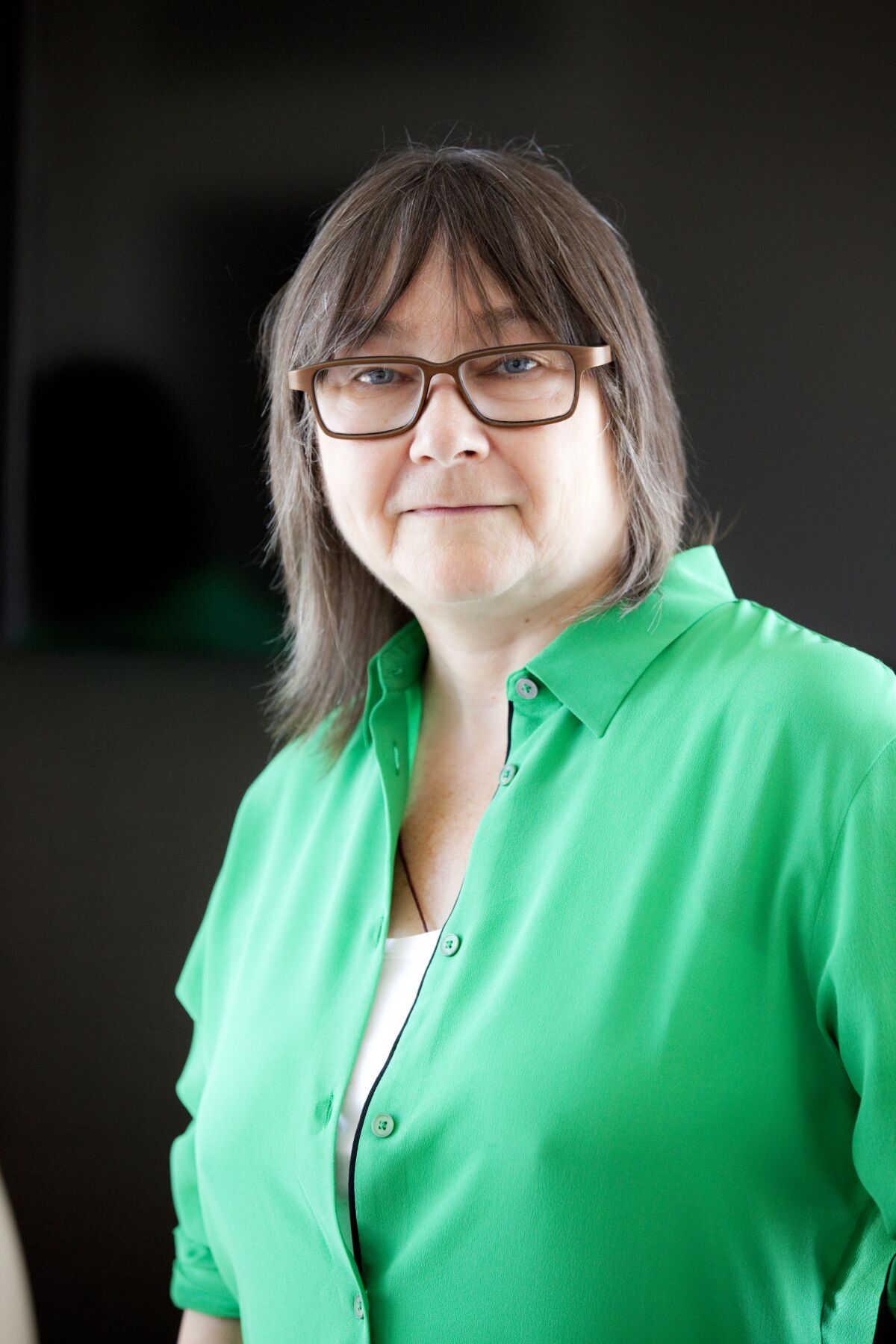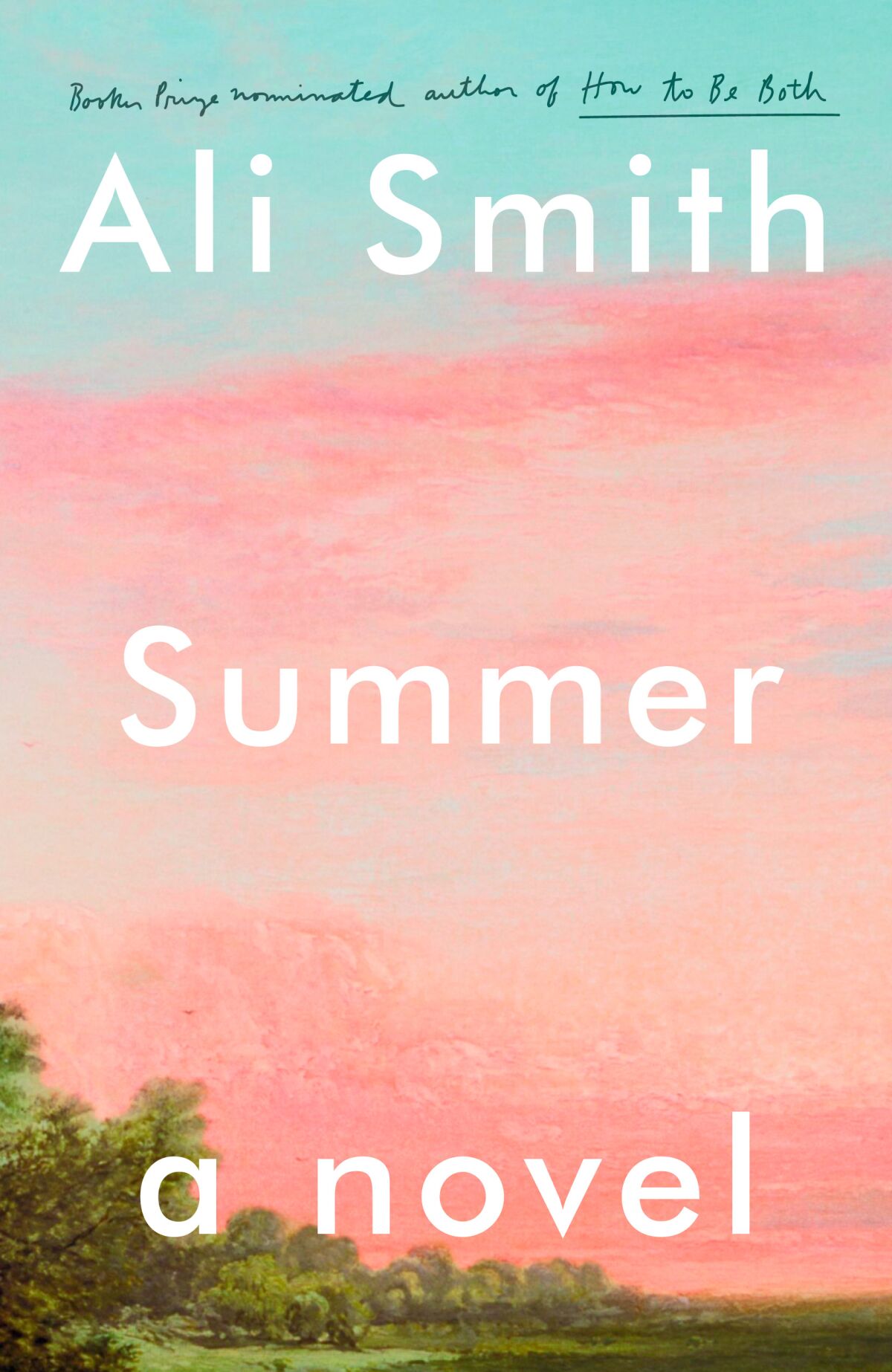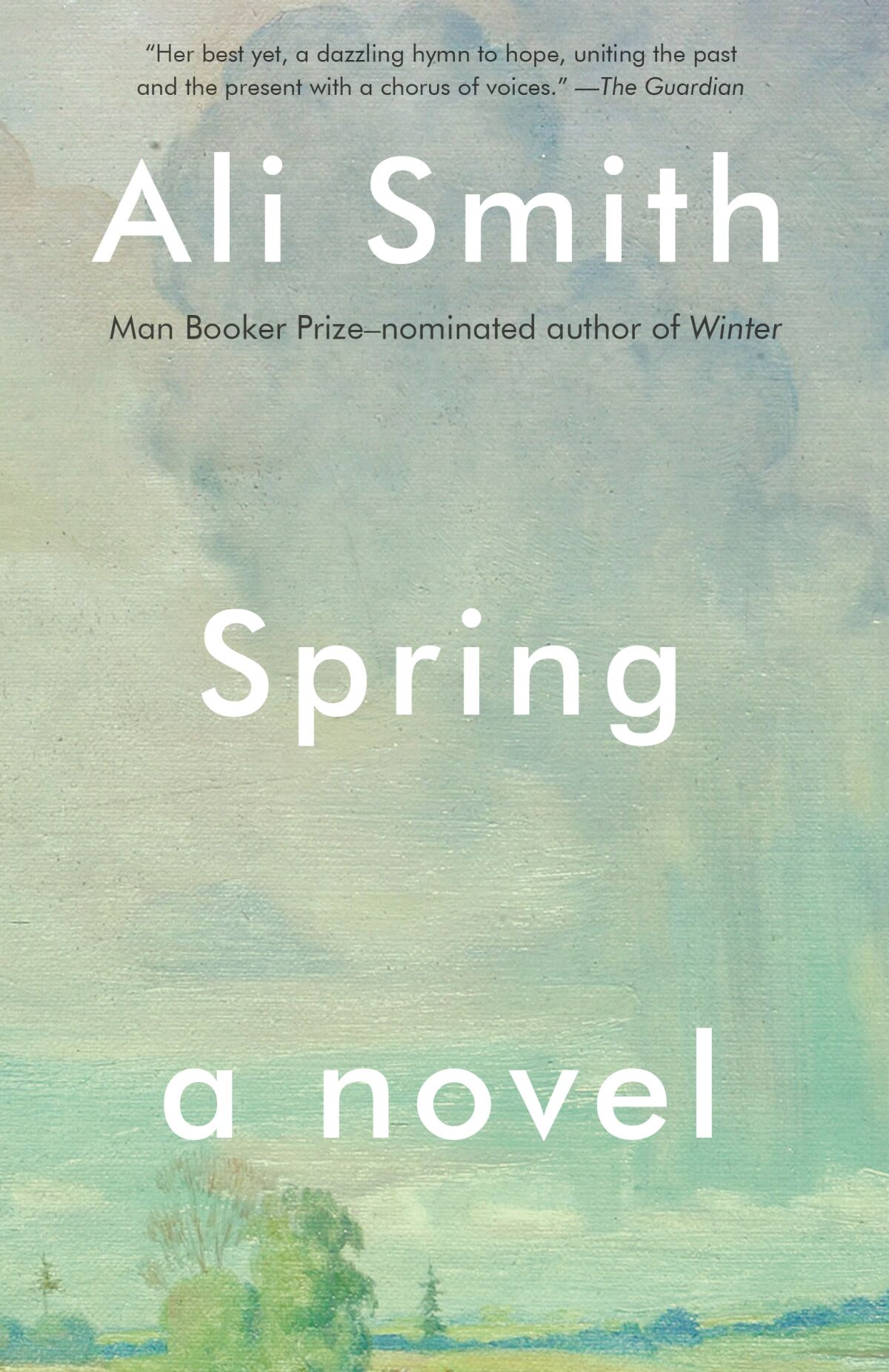
How Ali Smith wrote a fast, newsy, transcendent book series during the darkest of timelines
BY LAUREN LEBLANC
If you buy books linked on our site, The Times may earn a commission from Bookshop.org, whose fees support independent bookstores.
The excuses for not writing novels about headline news are both convenient and entirely valid. Fiction inspired by very recent events doesn’t afford enough distance to register their true impact, while the process of publishing it creates too much distance: a chaotic nanosecond-long news cycle makes a mockery of the standard publication schedule.
Five years ago, the British novelist Ali Smith ignored those excuses and accepted the challenge, beginning work on a four-season quartet of novels, which she’s written in as many years. “Summer,” the fourth and final installment, will be published in the U.S. this month, coming fairly fast on the heels of “Spring” (April 2019), “Winter” (January 2018) and “Autumn” (February 2017).
Seen in full, the finished cycle directly confronts our unsettling world without assuming the arrogant role of an oracle. While teeming with the anxieties of both history and the disorienting present, they are also emphatic narratives of idiosyncratic characters facing — and sometimes transcending — the isolation of modern life. Without bombast or melodrama, Smith exposes the quotidian horrors beyond the paralyzing headlines while capturing a latent hunger for beauty and unity that pushes individuals beyond comfort to imagine (yes, it’s possible) a better world.
As Smith herself put it during a long email exchange, these books may be experimental in their topicality but they are also deeply embedded in the origins of the novel — of the word itself. “The novel form comes originally from it being meant to be about the latest thing, the most novel thing,” Smith wrote.
The prospect of crafting a cycle on the seasons long predated Smith’s plans to examine Brexit and the election of Trump. “I knew I wanted to do something like it right back when I first started writing fiction,” she said. She was reminded of this, in a moment of self-doubt, when the writer Olivia Laing “turned up at the house in 2016 waving a photo of one of our cats from 20 years ago. I’d sent her it when she was a young tree-protester, and on the back, in my younger hand, it said, ‘I have a long-term plan to write a novella for each season.’ … I knew when I saw that not to fear, because the project had pretty deep roots, in me at least.”

Smith has never exactly been a conventional novelist. She doesn’t gravitate toward neat resolutions. “How to Be Both,” told from two conflicting perspectives, was published in two editions, each starting with a different narrator. That novel also strengthened Smith’s conviction that a publisher could turn around a news-driven novel faster than was customary. She turned it in a year late and it still came out on schedule six weeks later.
“Amazed at how vital it felt” to have a book out so quickly, Smith asked her publisher about the prospect of writing “something cyclic and linear both” to be “published as close to real time as possible.” She suggested to him, modestly, that “it would with any luck produce something interesting, and be a worthwhile experiment one way or another.”
These books hit the news slant, with characters who put the lie to the truism that we are more connected than ever. Though each book raises the bar of social and political isolation ever higher, the goal of the novels is to connect these isolates one by one, through ingenious means both known and unknown to them. In doing so, Smith manages to restore both a sense of community and something even rarer in the wired world: narrative.
Smith recognizes the stakes of pursuing this worthwhile experiment even as the pace of events accelerated: “I don’t know if these books will last, but then I’ve never imagined anything will. The project’s certainly seen interesting times, a lot that seemed unimaginable. I guess the imagination, and the zeitgeist’s imagination, where they meet, and what we do faced with the unimaginable, are key.”
Writing about “Spring” in May 2019, Rebecca Makkai reflected on the improvisatory nature of the work: “I doubt Smith herself knows all of what ‘Summer’ will entail, as it will, by publication, have absorbed the blows of a changing world.” Who could have imagined, for example, a pandemic?And yet, fiction possesses the imagination to conjure the impossible. Smith takes the facts of the moment and situates them within stories of characters trapped by circumstances but capable of change. In “Summer,” an estranged brother and sister reconcile thanks to an unexpected meeting; a couple take them and their mother on a very odd journey to fulfill the wish of a dead parent. Taking place just before the coronavirus begins to spread, this unexpected outing sheds light on both past and present in painful ways.
What doesn’t fit neatly into this scant plot summary are excursions into the Second World War, contemporary immigrant detention centers and the work of Italian filmmaker Lorenza Mazzetti. We are not always in a character’s head — nor even, for all the book’s immediacy, in the here and now.
Smith’s motivation was not to record a time capsule. Instead, she wanted to explore the ways we process these catastrophes so that we might break ourselves out. Technology is a core concern, both aiding and hindering our ability to connect. In “Winter,” a tech-savvy character has limited access due to her immigration status, while other use Twitter and Facebook with reckless abandon. A woman in “Spring” keeps records in a notebook, justifiably paranoid about being tracked via her smartphone. Throughout, tech enables Smith’s characters’ worst selves; the wiser ones proceed with caution.

Unsurprisingly, the author is skeptical of the internet. “It’s all about language as a system of meaning versus algorithm as a system of reduction,” Smith said, “and about the sad thing that happens to us all, on all levels, when the language of politics reduces us and itself to data or to social media output / followers instead of citizens of this very real world … Not that social media isn’t wonderful. It is — all the ways of connecting are wonderful, till they get used to serve the machine instead of the human.”
One of the most powerful moments in “Summer” involves the mystery of connection. Another set of siblings, Daniel and Hannah, are separated during World War II; he ends up in a British internment camp, she in the French Resistance. They write each other exquisite letters — and then, fearing capture or retribution, they burn them without sending them. It’s an excruciating loss for them and for readers, and yet they continue to write. Their devotion speaks to a loftier union of souls. It has nothing to do with information; it is an expression of faith.Before embarking on each novel, Smith and her publisher had a ritual; they would visit an archive to examine a handwritten document. Once, they found three distinct versions of the last letter novelist Katherine Mansfield wrote before she died.
“It pretty much demonstrated how history’s a mistake-maker too,” Smith said, “that messages pass between us and they change as they go. Which is all just to say — we’re fluid, malleable beings, not data.” Handwritten writing, whether by great novelists, “our gone parents or loved ones or children, or you, or me, is a revelation of the vitality, the real flowing life, that passes and has passed through each and every one of us.”
She didn’t say — and doesn’t have to — that crafted narrative, that record of history’s mistakes, which are people’s mistakes, is also a revelation of endurance and a balm even in the worst of times. Of that, Smith’s landmark quartet is proof.
LeBlanc is the books columnist for the Observer.


No comments:
Post a Comment